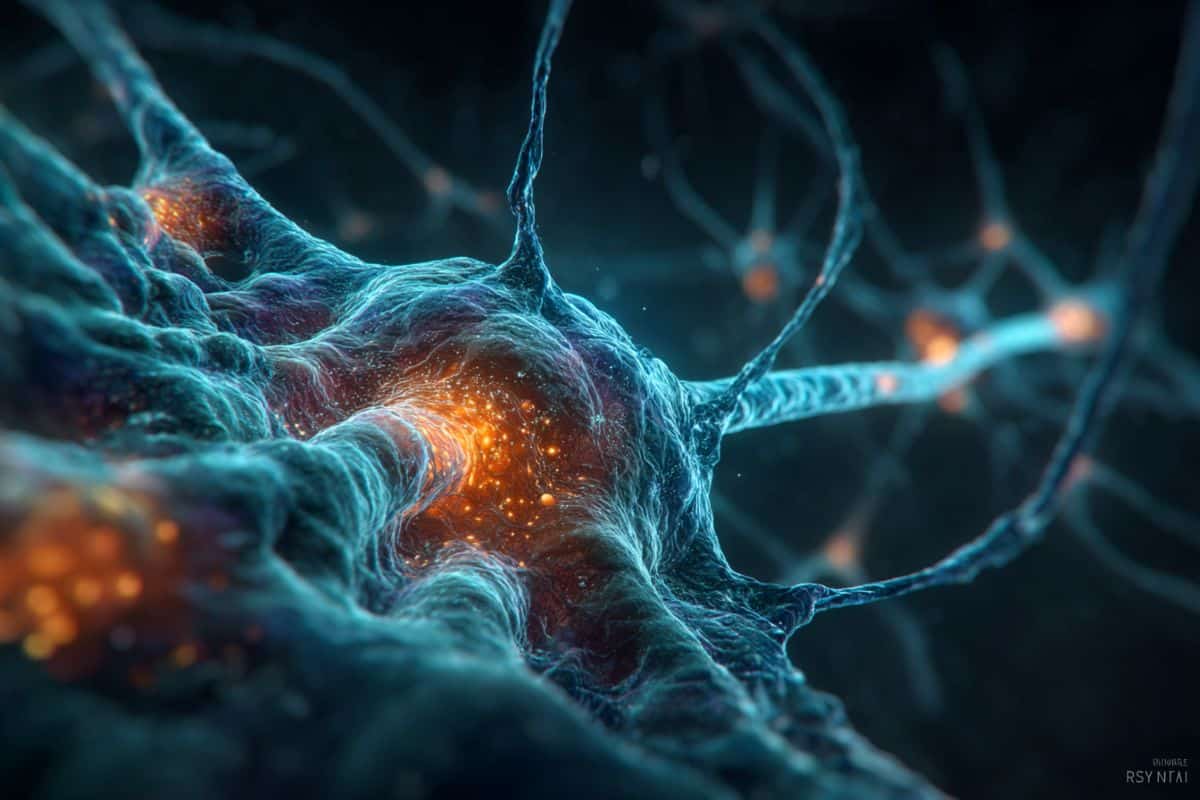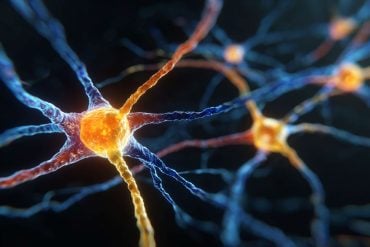Summary: Researchers discovered that gephyrin, a key protein at inhibitory synapses, forms organized filaments that act as the structural basis for postsynaptic densities. This finding overturns previous assumptions that proteins in synapses were disordered, revealing instead a surprising level of organization.
The team used cryo-electron microscopy to visualize the structures and showed that these filaments are essential for inhibitory synapse formation. The discovery not only deepens understanding of brain communication but also highlights new therapeutic targets for neurological conditions such as epilepsy.
Key Facts
- Gephyrin Filaments: Gephyrin proteins form filaments that stabilize inhibitory synapses.
- Synapse Foundation: These filaments provide the structural basis for postsynaptic densities.
- Clinical Relevance: The findings help explain how mutations in gephyrin contribute to neurological disorders.
Source: University of Cologne
A team of scientists from the University of Cologne’s Institute of Biochemistry has made a decisive discovery about the molecular basis of synapse formation in the central nervous system.
They studied inhibitory synapses, the so-called “brakes” in our brain, which regulate that a signal is no longer transmitted. Specifically, the researchers looked at a protein called gephyrin, which stabilizes one half of these synapses, the so-called postsynaptic density.

The research, published in the journal Nature Communications under the title “Gephyrin filaments represent the molecular basis of inhibitory postsynaptic densities” reveals a previously unknown form of molecular interaction in the protein gephyrin, allowing it to form elongated filaments.
These filaments are the organizational foundation for the formation of the post-synapse, which in turn results in the formation of billions of synapses that the brain uses in almost all communication functions.
Led by experts Professor Dr Günter Schwarz and Professor Dr Elmar Behrmann, the team used cutting-edge cryo-electron microscopy to visualize the 3-dimensional structure of the protein gephyrin.
The study found that one domain of gephyrin, which binds to the neuro-receptor and forms dimers (larger structures composed of a pair of proteins), builds elongated filamentous structures, which was a huge surprise. Before, it was thought that proteins in phase-separated condensates are disordered, but now a remarkable level of organization was revealed.
In addition to the structural work, in vitro experiments and work in isolated cell lines not only highlighted that these filaments are required to form synapses, but also explain why specific mutations found in the gephyrin gene cause neurological diseases.
“This is a major breakthrough in our understanding of the molecular basis of inhibitory synapses formation,” says Günter Schwarz, lead author of the study. “Our findings have significant implications for the development of new treatments for neurological disorders related to these synapses, such as epilepsy.”
Elmar Behrmann, the other lead author, adds: “The use of cryo-electron microscopy allowed us to visualize the gephyrin filaments in unprecedented detail. This has given us a deeper understanding of the molecular mechanisms underlying inhibitory synapses and has opened up new avenues for research.”
The study’s first author, Dr Arthur Macha, a postdoctoral researcher shared between both labs, said: “We were initially surprised to find interfaces between gephyrin molecules in our data that looked like the ‘Zoro’ Z. This discovery closes the gap in our understanding of how receptor arrangement, gephyrin interaction, and synapse formation are functionally connected.”
The research was conducted at the University of Cologne’s Institute of Biochemistry, which is known for its expertise in structural biology, protein, peptide, and redox biochemistry.
The study’s findings have the potential to revolutionize our understanding of the molecular basis of inhibitory postsynaptic densities and will form the basis to dissect the architecture of entire synapses on a new molecular level, the team concluded.
About this neuroscience research news
Author: Eva Schissler
Source: University of Cologne
Contact: Eva Schissler – University of Cologne
Image: The image is credited to Neuroscience News
Original Research: Open access.
“Gephyrin filaments represent the molecular basis of inhibitory postsynaptic densities” by Elmar Behrmann et al. Nature Communications
Abstract
Gephyrin filaments represent the molecular basis of inhibitory postsynaptic densities
The multifunctional protein gephyrin clusters inhibitory receptors at the postsynaptic membrane in the CNS.
Gephyrin has been proposed to form the inhibitory postsynaptic density by liquid-liquid phase separation, involving a complex interplay between receptor binding and oligomerization via its conserved G- and E-domains.
Here we show by single particle cryo-EM analysis that dimerization promotes the formation of gephyrin filaments in which two E-domain dimers are linked by Z-shaped interfaces formed between two subdomains II (SDII) of adjacent dimers.
Deletion of SDII, introduction of two epilepsy-causing pathogenic variants, or neutralization of an opposing charge in the interface abolish the formation of filaments, in vitro phase separation, and synaptic receptor clustering in hippocampal neurons.
In conclusion, this work identifies gephyrin E-domain filaments as the structural foundation underlying gephyrin both phase separation and receptor clustering at inhibitory postsynaptic densities.






